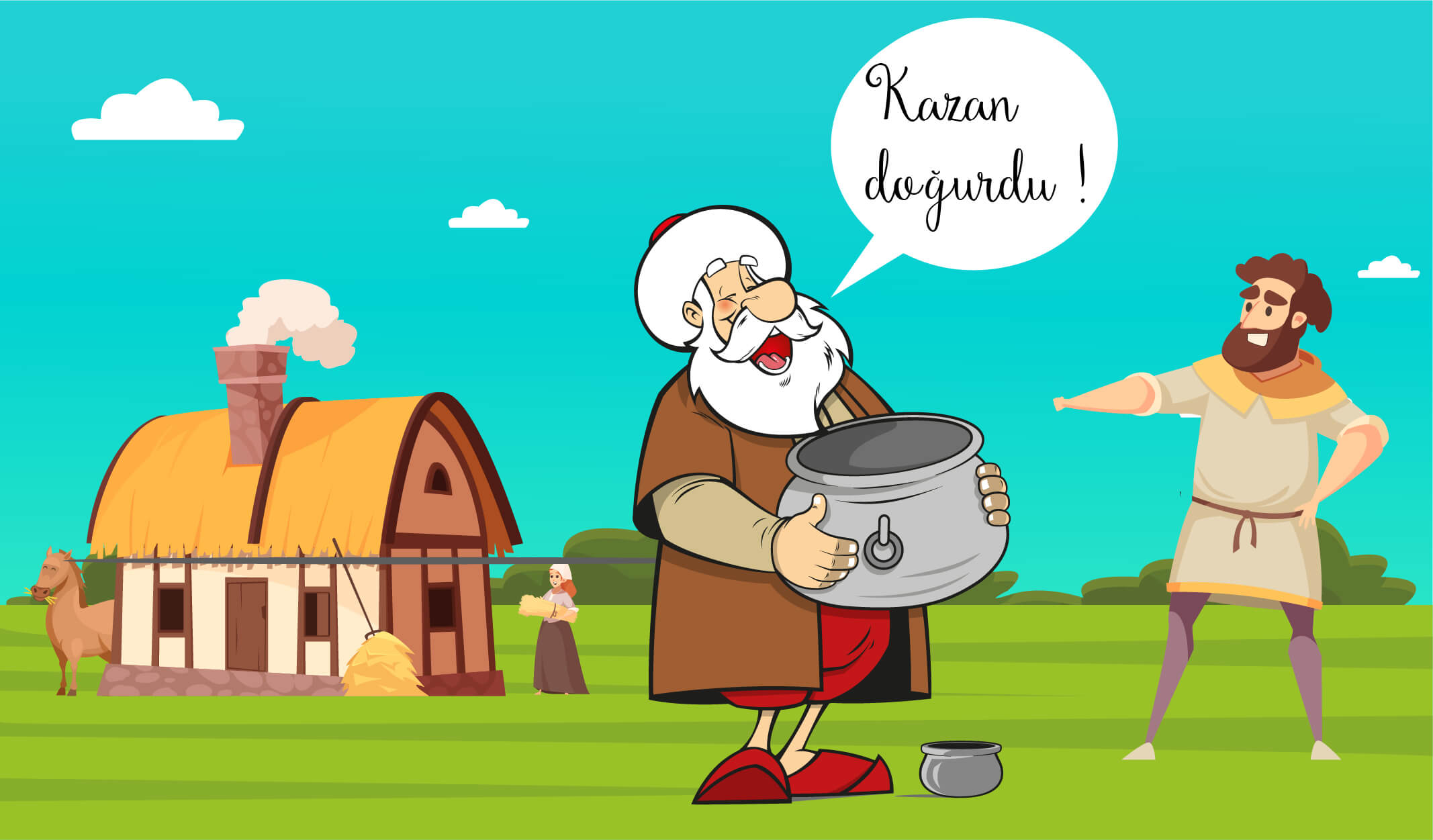 NASREDDİN HODJA'S LİFE
NASREDDİN HODJA'S LİFE
Nasreddin lived in Anatolia, Turkey; he was born in Hortu Village in Sivrihisar,Eskişehir in the 13th century, then settled in Akşehir, and later in Konya where he died (probably born in 1209 CE and died 1275/6 or 1285/6 CE).
As generations went by, new stories were added, others were modified, and the character and his tales spread to other regions. The themes in the tales have become part of the folklore of a number of nations and express the national imaginations of a variety of cultures. Although most of them depict Nasreddin in an early small-village setting, the tales (like Aesop’s fables) deal with concepts that have a certain timelessness. They purvey a pithy folk wisdom that triumphs over all trials and tribulations. The oldest manuscript of Nasreddin was found in 1571.
Today, Nasreddin stories are told in a wide variety of regions, especially across the Muslim world, and have been translated into many languages. Some regions independently developed a character similar to Nasreddin, and the stories have become part of a larger whole. In many regions, Nasreddin is a major part of the culture, and is quoted or alluded to frequently in daily life. Since there are thousands of different Nasreddin stories, one can be found to fit almost any occasion.Nasreddin often appears as a whimsical character of a large Albanian, Arab, Armenian, Azeri, Bengali, Bosnian, Bulgarian, Greek, Kurdish, Chinese, Russian, Hindi, Italian, Pashto, Persian, Romanian, Serbian, Turkish and Urdu folk tradition of vignettes, not entirely different from zen koans. He is also very popular in Greece for his wisdom and his judgement;[citation needed] he is also known in Bulgaria, although in a different role, see below. He has been very popular in China for many years, and still appears in variety of movies, cartoons, and novels.
The “International Nasreddin Hodja Festival” is held annually in Aksehir, Turkey between July 5–10.
Some people say that, whilst uttering what seemed madness, he was, in reality, divinely inspired, and that it was not madness but wisdom that he uttered.
Nasreddin lived in Anatolia, Turkey; he was born in Hortu Village in Sivrihisar,Eskişehir in the 13th century, then settled in Akşehir, and later in Konya where he died (probably born in 1209 CE and died 1275/6 or 1285/6 CE).
As generations went by, new stories were added, others were modified, and the character and his tales spread to other regions. The themes in the tales have become part of the folklore of a number of nations and express the national imaginations of a variety of cultures. Although most of them depict Nasreddin in an early small-village setting, the tales (like Aesop’s fables) deal with concepts that have a certain timelessness. They purvey a pithy folk wisdom that triumphs over all trials and tribulations. The oldest manuscript of Nasreddin was found in 1571.
Today, Nasreddin stories are told in a wide variety of regions, especially across the Muslim world, and have been translated into many languages. Some regions independently developed a character similar to Nasreddin, and the stories have become part of a larger whole. In many regions, Nasreddin is a major part of the culture, and is quoted or alluded to frequently in daily life. Since there are thousands of different Nasreddin stories, one can be found to fit almost any occasion.Nasreddin often appears as a whimsical character of a large Albanian, Arab, Armenian, Azeri, Bengali, Bosnian, Bulgarian, Greek, Kurdish, Chinese, Russian, Hindi, Italian, Pashto, Persian, Romanian, Serbian, Turkish and Urdu folk tradition of vignettes, not entirely different from zen koans. He is also very popular in Greece for his wisdom and his judgement;[citation needed] he is also known in Bulgaria, although in a different role, see below. He has been very popular in China for many years, and still appears in variety of movies, cartoons, and novels.
The “International Nasreddin Hodja Festival” is held annually in Aksehir, Turkey between July 5–10.
Some people say that, whilst uttering what seemed madness, he was, in reality, divinely inspired, and that it was not madness but wisdom that he uttered.
As generations went by, new stories were added, others were modified, and the character and his tales spread to other regions. The themes in the tales have become part of the folklore of a number of nations and express the national imaginations of a variety of cultures. Although most of them depict Nasreddin in an early small-village setting, the tales (like Aesop’s fables) deal with concepts that have a certain timelessness. They purvey a pithy folk wisdom that triumphs over all trials and tribulations. The oldest manuscript of Nasreddin was found in 1571.
Today, Nasreddin stories are told in a wide variety of regions, especially across the Muslim world, and have been translated into many languages. Some regions independently developed a character similar to Nasreddin, and the stories have become part of a larger whole. In many regions, Nasreddin is a major part of the culture, and is quoted or alluded to frequently in daily life. Since there are thousands of different Nasreddin stories, one can be found to fit almost any occasion.Nasreddin often appears as a whimsical character of a large Albanian, Arab, Armenian, Azeri, Bengali, Bosnian, Bulgarian, Greek, Kurdish, Chinese, Russian, Hindi, Italian, Pashto, Persian, Romanian, Serbian, Turkish and Urdu folk tradition of vignettes, not entirely different from zen koans. He is also very popular in Greece for his wisdom and his judgement;[citation needed] he is also known in Bulgaria, although in a different role, see below. He has been very popular in China for many years, and still appears in variety of movies, cartoons, and novels.
The “International Nasreddin Hodja Festival” is held annually in Aksehir, Turkey between July 5–10.
Some people say that, whilst uttering what seemed madness, he was, in reality, divinely inspired, and that it was not madness but wisdom that he uttered.

Yorumlar
Yorum Gönder